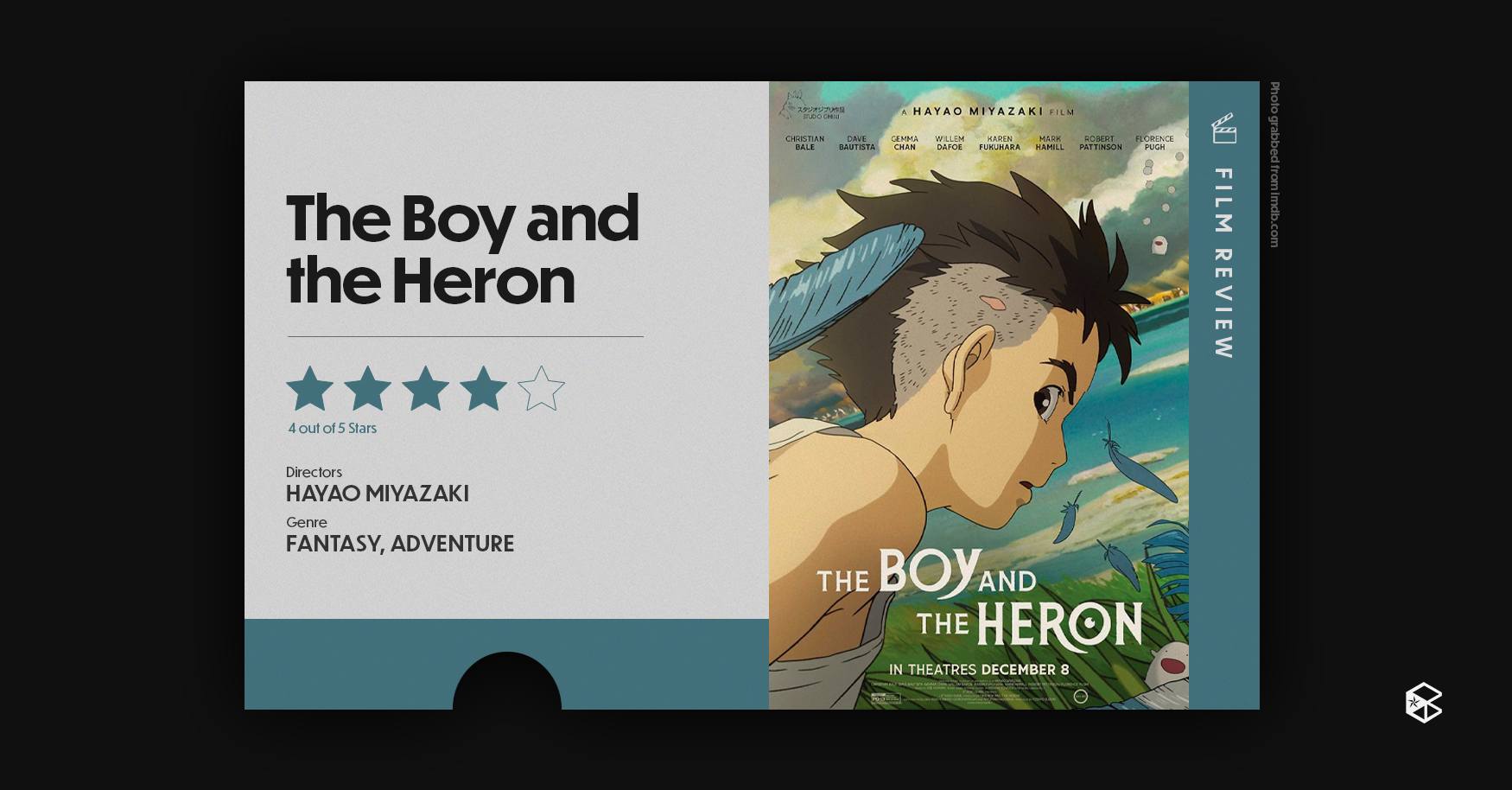The Boy and the Heron finally debuted in Philippine cinemas on Jan. 8. Announced as Hayao Miyazaki’s most personal project to date, the film holds a lot of sentiment for both him and its viewers.
The film takes place in Japan during World War II and follows the story of Mahito, voiced by Soma Santoki (Japanese), and Luca Padova (English), as he deals with adjusting to his new life following the death of his mother. Fleeing from the city to the suburbs due to the war, Mahito struggles to adapt to his new environment. His situation isn't helped by the appearance of the Gray Heron, voiced by Masaki Suda (Japanese), and Robert Pattinson (English), who leads him to a mystical tower in their country estate under the promise that he will find his mother inside.
The film won a Golden Globe Award under the Best Animated Feature Film category, making it the first non-English animated feature film to win this award, according to an article published by BBC News. This success can only be described as hard-earned as production of the film reportedly took seven years. The same article also reports how producer Toshio Suzuki shared that the film might just be the most expensive film ever produced in Japan. Similarly, the film also made history in the U.S. screening when it topped the North American box office after its release on Dec. 8, 2023.
A glimpse into Miyazaki’s inner world
The Boy and the Heron is a reference to the Japanese novel How Do You Live? by Genzaburo Yoshino. Similar to the book, the film also deals with themes of coming of age, grief, and the human condition. However, its story, characters, and most elements are still of Miyazaki’s creation. The film also takes a lot of elements from Japanese folklore, especially with the symbolism behind the Gray Heron as an omen of change.
In classic Studio Ghibli fashion, the film does its part to serve viewers with breathtaking visuals accompanied by a compelling musical score written by Joe Hisaishi. The film does well in blending 2D elements onto 3D backgrounds making the overall animation of the film seamless. The musical score, similar to the film, takes on a more melancholic and reflective tone, as compared to previous projects under Miyazaki and Studio Ghibli.
The film itself is personal to Miyazaki, who chose to draw inspiration from his own experiences. His journey in trying to find a suitable successor to his legacy, his childhood, and his philosophies are all paralleled in the film. Some of the movie’s elements also seem to be directly inspired by previous projects under Studio Ghibli. The adorable Warawara—which supposedly symbolize human souls before they are brought to the physical world—are reminiscent of a combination of the soot spirits in Spirited Away and the tree spirits in Princess Mononoke. Certain scenes also evoke the same feeling of nostalgia towards the studio’s previous works, such as how Mahito's encounter with the Heron’s illusion of his mother is similar to Sophie's when she encounters Howl after a mishap with his hair dye in Howl’s Moving Castle.
Although it would take a careful eye to spot them all, they all play into the sentiment of the project.
Accepting the end
The first half of the film explores Mahito's struggle with overcoming his grief and accepting the change that comes after loss, while also showing the depth to which his grief consumes him. On the surface level, Mahito seems to aimlessly go along with his father’s wishes when he decides to relocate, enroll him in a different school, and marry his stepmom shortly after his mother’s death. However, behind closed doors, the viewers are shown a different narrative—one that shows Mahito’s vulnerability and struggles with processing everything happening to him.
During the film’s second half, the viewers watch as Mahito grows to accept that grief, loss, and change are all experiences that make us human. Despite the pain that often comes with these experiences, the growth that follows is ultimately more rewarding and it is because of this that he chooses to continue living no matter how imperfect this life is.
Unlike previous works under Studio Ghibli, The Boy and the Heron is quite unclear with the message it wants to convey. Certain elements in the film are never explained or fully explored leaving audiences with less information than they’d like. Following its release there have been criticisms that its narrative is disjointed, hard to follow at times, and seems to rely more on the emotions of experiencing the film. In a way, the viewers are placed alongside Mahito as they try to make sense of the introduction of all these overwhelming experiences with him. Several of the film’s messages are rhetorical and only really start to make sense after some time of reflection for audiences.
At its surface level, the film deals with the awareness of mortality and how losses often shape the paths we take in life. In the book How Do You Live, French mathematician and philosopher Blaise Pascal quotes, “Human beings are so great that they demonstrate their greatness by recognizing their own misery.” It comes from a chapter in the book that highlights the idea that it is only through experiencing misery that we can gain a better and more appreciative view of what it means to live, which the film explores through its overarching story.
Ultimately, The Boy and the Heron rewards its viewers by challenging them to reflect on a simple, yet poignant question—how do you live?
You can catch The Boy and the Heron available for viewing in cinemas nationwide, with the dubbed version of the film being released in select cinemas only.


